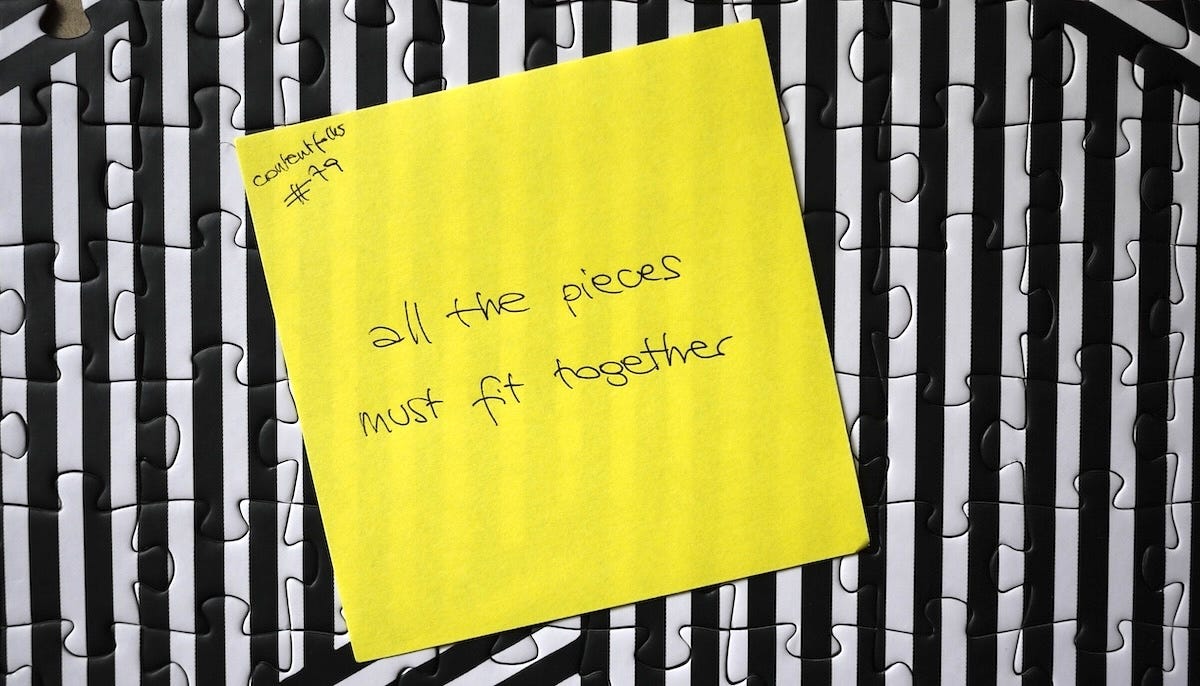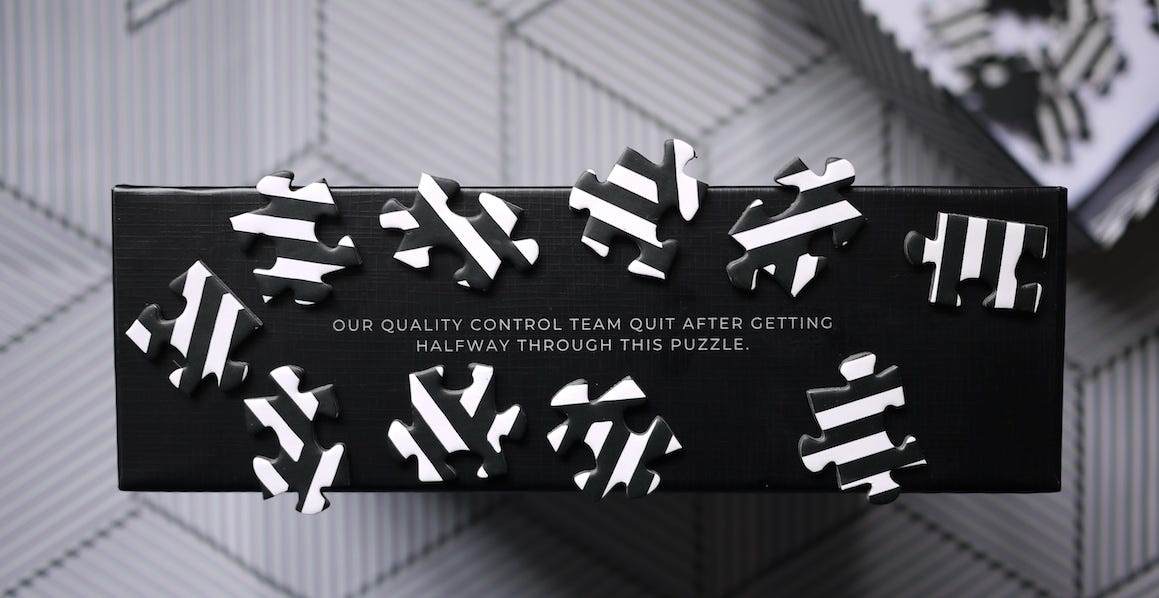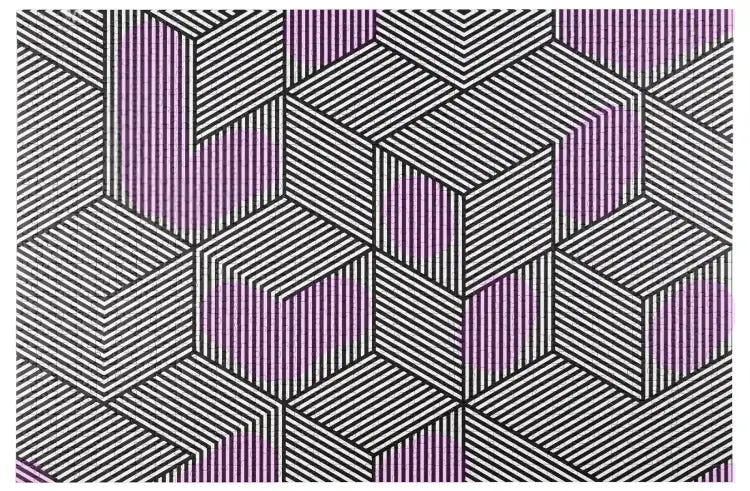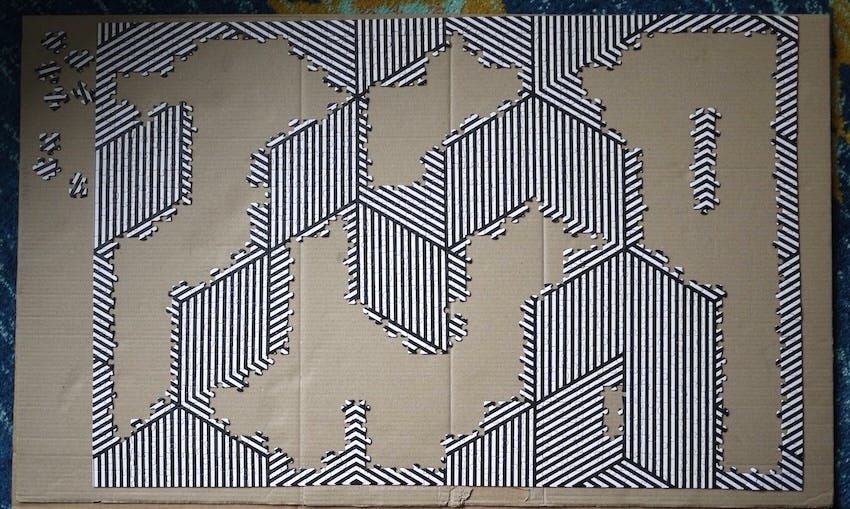You are reading contentfolks—a fortnightly sporadic blend of sticky notes, big content ideas, and small practical examples. Thank you for being here! ~fio
Hey there,
Today’s issue is about strategy—although for the first two thirds, it will look like it’s about jigsaw puzzles. Just warning you in case you think I’ve gone and changed the focus of this newsletter for 2024 😉
How do you tackle a very difficult puzzle?
Suppose you were known for being extremely good at difficult jigsaw puzzles, and a friend gifted you a 1000-piecer named LIABILITY1 that looks like this ↓
Having solved many a puzzle in your life, you sense this will be a WTFesque level of difficulty—and the feeling gets stronger as you open the box and spot text on the side that reads “our quality control team quit after getting halfway through this puzzle.” Also,
The pieces have no distinguishing features, shape- or size-wise (except for the edges)
There are just three patterns in the whole box: straight lines, diagonal lines, mixed lines
Everything looks the same as everything else 🤦♀️
Based on these observations, you already know you can’t solve LIABILITY with a standard playbook like relying on shapes or matching pieces to places.
So what can you do?
The guiding picture on the back shows fewer straight-line pieces than diagonal ones, which means the most effective way to solve LIABILITY is likely by pattern. After building the outer edges, the best bet is to move on to the straight-line sections, then to the diagonal ones that attach to them, and then fill any remaining gaps.
Having determined the overall approach, you develop a multi-step plan of action:
Find the edge pieces and build the outer edges
Sort the remaining 900ish pieces into three piles: straight lines only, diagonal lines only, mixed lines
Sort the straight-line pieces into sub-groups by shape
Build out the straight line sections
Sort the diagonal pieces into sub-groups by shape
Sort each sub-group into ascending vs. descending lines
Build the diagonal line sections
and so on
With this approach, you should be able to complete the puzzle in around 402 hours.
…and that’s how strategy works 🧩
What you’ve just gone through is the core diagnosis → guiding policy → actions process that underpins all successful strategic work.
To recap:
Diagnosis: understand the situation you’re in and the exact nature of the problem you need to solve
↓
Guiding policy: based on the information and insight you gathered, develop an overarching approach for solving the problem
↓
Coherent actions: list the actions and methods aligned with the guiding policy that you’ll use to solve the problem
At its core, that’s what strategy is: taking a problem, discovering what makes it hard, and finding the right way(s) to solve it.3 The concept is super obvious when applied to a puzzle: you intuitively know that picking random pieces from the pile and expecting them to slot right into place is not a sensible approach...
…and yet, that’s often how content folks expect marketing programmes to work: we bypass the diagnosis and guiding policy phases, jump straight into picking tactics, and expect that all the pieces will automagically fit together in the end.
Spoiler alert: they rarely do.4
I can officially confirm that the strategy for solving LIABILITY was correct but the timing was a tad optimistic. About 30 hours in, I’m still just in the early stages of the diagonal-only section—it’s a real slog, folks. And staring at black & white diagonal lines up close for hours in a row does funny things to your brain.5
…but it’s getting there. And like with most difficult things, it takes time, effort, and patience for all the pieces to fit together in the end.
Don’t you just love the product description? It’s fun, cheeky, and perfectly tailored to its audience: “We know our customer base is full of the most twisted 🥨 puzzlers from all corners of the country. Deep down inside, you want this.” They got that exactly right!
FYI, this is a fantastic example of a product-led, keyword-informed piece of B2C content I found after googling “How long does it take to finish a hard puzzle?”—the people on Cloudberries’ content team sure know what they’re doing, and their jigsaws are excellent, too.
It’s a simple concept, but one that so often gets misused or ignored. Recommended reading/listening from January 2024→ Good Strategy, Bad Strategy: Richard Rumelt on Lenny’s Podcast
And if they did, by some marvellous once-in-a-lifetime coincidence, you’d never be able to replicate it. Which is to say: a tactics-first approach might lead to an occasionally excellent result, but it doesn’t give you a predictable or repeatable way to do it a second time.








